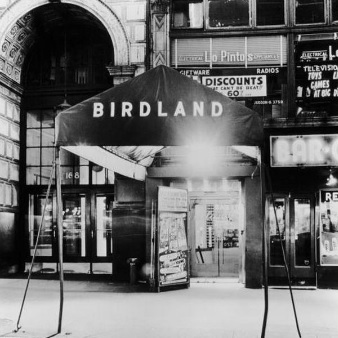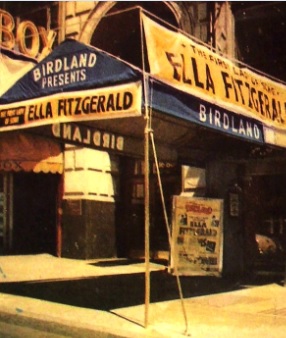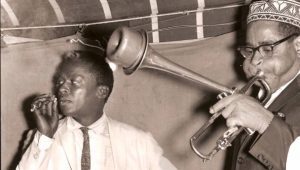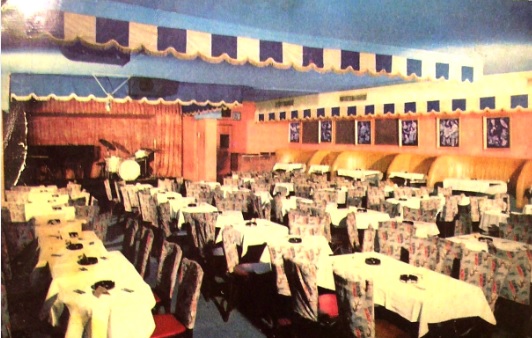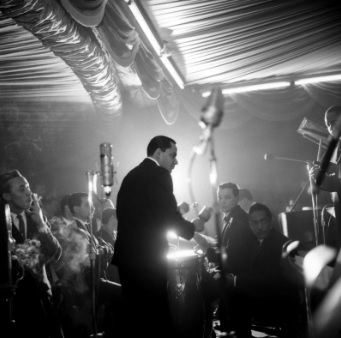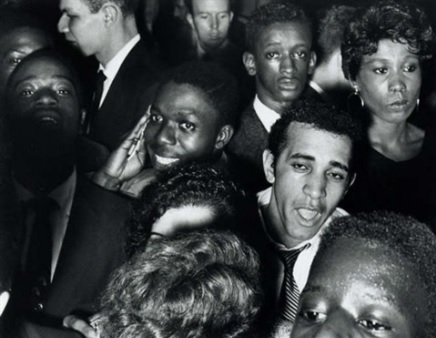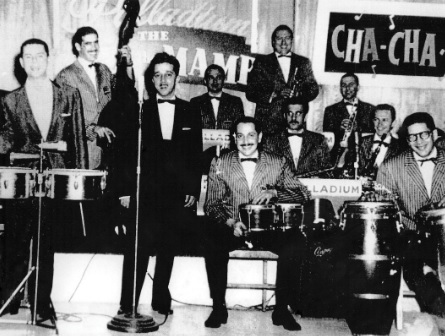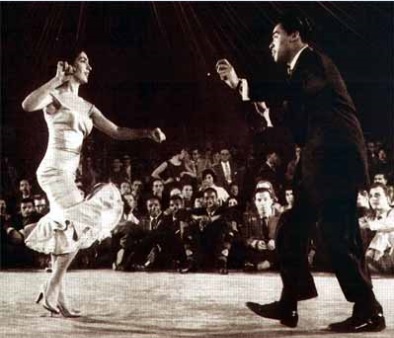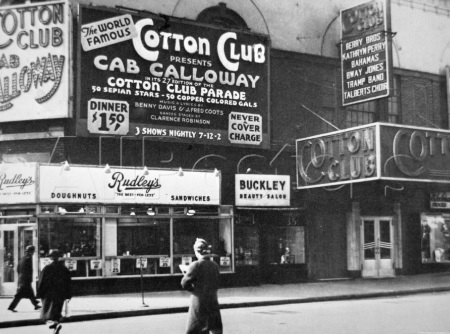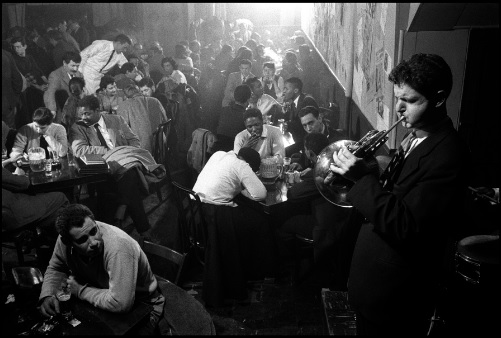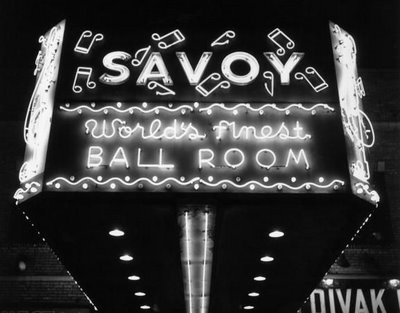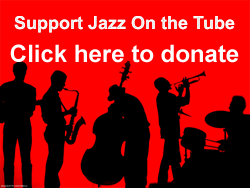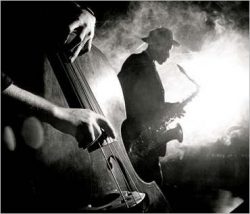Afro-Cuban culture, Blog, Cuba, The Cuba-US connection, Video and audio
Playlist
01. Introducción por Mario Bauza y Billy Taylor
02. Manteca, … con Dizzi Gillespie, 1942
03. Blen, Blen, Blen… canta Miguelito Valdés & Orq. Casino de la Playa, 1940
04. Ariñañara… Chano Pozo
05. Muna Sanganfimba…. Chano Pozo
06. Guaguina Yerabo…. Miguelito Valdés & Orq. Havanna Riverside, 1940
07. Anana Boroco Tinde… Miguelito Valdé & Xavier Cugat & Waldorf Astoria Orchestra
08. Blen, Blen, Blen.. Antonio “Cheche” De La Cruz & Orquesta Casino de la Playa, versión 1941.
09. Parampampin…. Panchito Riset con el Cuarteto Caney, 1941
10. Parampampin….. Tito Rodriguez & Marcano y su Grupo, 1942
11. Bang, Que Choque…. Chano Pozo
12. Rómpete…. Miguelito Valdés con Machito y la Afro-Cubans, 1942
13. Nague…. Chano Pozo
14. Zarabanda…. Reinaldo Valdés “El Jabao” & Orq. Hermanos Palau 1943.
15. Ampárame…. Cascarita & Julio Cueva y su Orquesta, 1946.
Fans of American jazz know about the Chano Pozo’s famous collaboration with Dizzy Gillespie, but there is much more to his life and career.
Chano was born Luciano Pozo González on January 7, 1915 in a very poor neighborhood in Havana.
In his early teenage years, he was introduced to Santería, also known as “La Regla de Ocha”, an Afro-Caribbean religion derived from the beliefs of the Yoruba people of Nigeria. He was also involved in the Abakuá secret society and Palo which has its roots in the Congo.
Pozo was a colorful, energetic character engaged in all kinds of activities, some legal, some less-than-legal, but he was best know for his drumming, dancing and the award winning compositions he wrote for Carnival parades.
One of these tunes “La Comparsa de los Dandys” is to this day a kind of unofficial theme song for the city of Santiago de Cuba and is a familiar standard at many Latin American carnivals.
Chano was involved in the battle to break the color barrier in the Cuban music industry which at the time excluded dark skinned black from professional opportunities.
In 1947, he moved to New York City for better opportunities encouraged by his friend Miguelito Valdés.
That same year he met Dizzy, recorded with him and many others, and went on tour in Europe. A year later, his promising life was cut short in a pointless act of violence on a New York City Street.
Many of the tunes on this playlist feature Chano’s friend Miguelito Valdés on vocals.
– Ken McCarthy
Jazz on the Tube
P.S. Our unique programming is made possible by help from people like you. Learn how you can contribute to our efforts here: Support Jazz on the Tube
Thanks.
Go to Cuba with Jazz on the Tube as your guide:
Click here for details
Afro-Cuban culture, Blog, Cuba, Cuban Jazz, Latin Jazz, The Cuba-US connection, Video and audio
Interview
Download the mp3 here
Ken McCarthy talks with Martin Cohen
Click here to visit Martin Cohen’s Congahead channel
More videos
Making the first bongo drum
A conga accident that led to a success
How Latin Percussion got its endorsement
Click here to visit Martin Cohen’s Congahead channel
– Ken McCarthy
Jazz on the Tube
P.S. Our unique programming is made possible by help from people like you. Learn how you can contribute to our efforts here: Support Jazz on the Tube
Thanks.
Go to Cuba with Jazz on the Tube as your guide:
Click here for details
Afro-Cuban culture, Blog, Cuba, Cuban Jazz, The Cuba-US connection, Video and audio
Machito’s son, percussionist and bandleader Mario Grillo, recalls the details of his father and his work in a touching and entertaining way.
Lots to learn from this narrative.
Machito and his Afro-Cubans perform for a live studio audience in Japan. The beautiful manners of Japan and Latin America meet.
– Ken McCarthy
Jazz on the Tube
P.S. Our unique programming is made possible by help from people like you. Learn how you can contribute to our efforts here: Support Jazz on the Tube
Thanks.
Go to Cuba with Jazz on the Tube as your guide:
Click here for details
Blog, Cuba, Latin Jazz, The Cuba-US connection, Video and audio
For those who missed it, Birdland, the shrine of bebop, and the Palladium Ballroom, the shrine of Latin jazz, were just a block away from each other.
The original Birdland opened December 15, 1949 at 1678 Broadway just north of West 52nd Street and closed in 1965.
The Palladium Ballroom opened in 1948 on the corner of 53rd Street and Broadway in New York City and closed May 1, 1966.
Musicians and audience members went back and forth between the two nightspots.
Jazzman Slim Gaillard and Tito Puente reminisce about the heyday – and then get down to a jam.
Note: Don’t got looking for either of these places. They’re gone, but here’s what they looked like.
The original Birdland
 The front door
The front door Ella Fitzgerald in the house
Ella Fitzgerald in the house A cool spot
A cool spot Celebrity hangout
Celebrity hangout The interior
The interior
The original Palladium Ballroom
 Tito Rodriguez on the bandstand
Tito Rodriguez on the bandstand The Crowd
The Crowd Tito Puente and Ray Baretto
Tito Puente and Ray Baretto Dancers
Dancers
Other famous joints
 Cotton Club
Cotton Club Five Spot
Five Spot Savoy Ballroom
Savoy Ballroom The dance floor at the Savoy
The dance floor at the Savoy– Ken McCarthy
Jazz on the Tube
P.S. Our unique programming is made possible by help from people like you. Learn how you can contribute to our efforts here: Support Jazz on the Tube
Thanks.
Go to Cuba with Jazz on the Tube as your guide:
Click here for details
Afro-Cuban culture, Blog, Cuba, Latin Jazz, The Cuba-US connection, Video and audio
From Wikipedia:
Santamaría learned rumba as a kid in the streets of Havana’s Jesús María barrio.
He reminisced: “In the neighborhood where I came from we had all kinds of music, mostly from Africa. We did not leave it alone; we changed it our way. The music we made dealt with religion and conversation. The drum was our tool and we used it for everything.”
Afro Blue (a Mongo Santamaria composition)
Personnel on Afro Blue
Mongo Santamaria, congas
Bobby Sanabria, drums
Sal Santamaria, percussion
E.J. Allen, trumpet
Sam Furnace, tenor saxophone
Tony Hinson, baritone saxophone
Bob Quaranta, piano
Eddie Resto, bass
Afro Blue – The John Coltrane version
More from Mongo
Tracks:
1. Perez Prado – Mambo del 65 – Mongo on congas, first time he was recorded on the instrument
2. Tito Puente – Four Beat Mambo – Mongo with Willie Bobo, and Patato
3. Mongo Santamaria’s Afro-Cuban Drums
4. Cal Djader Quintet – Afro-Blue – Tune with and by Mongo Santamaria
5. Mongo Santamaria – Mazacote – With Willie Bobo, Al McKibbon (Mongo on bongo)
6. Mongo Santamaria – Canta Bajo – Mongo Introduces La Lupe
7. Mongo Santamaria – Canto Abacua – With Justo Betancourt
– Ken McCarthy
Jazz on the Tube
P.S. Our unique programming is made possible by help from people like you. Learn how you can contribute to our efforts here: Support Jazz on the Tube
Thanks.
Afro-Cuban culture, Blog, Cuba, Latin Jazz, Puerto Rico, The Cuba-US connection, Video and audio
When you talk about Cuban music, you have to talk about Puerto Rico and the Bronx too.
This video is a classic example why.
From a concert recorded in Puerto Rico in 1998.
Andy Gonzalez – bass, The Bronx (Puerto Rico)
Jerry Gonzalez – trumpet, The Bronx (Puerto Rico)
Ivan Renta – tenor sax, Puerto Rico
Luis Perdomo – piano, Venezuela
Pedrito Martinez – congas, Cuba
Jerry Gonzalez founded the The Fort Apache Band, which included his brother Andy, one of the great Latin jazz innovators of all time.
– Ken McCarthy
Jazz on the Tube

